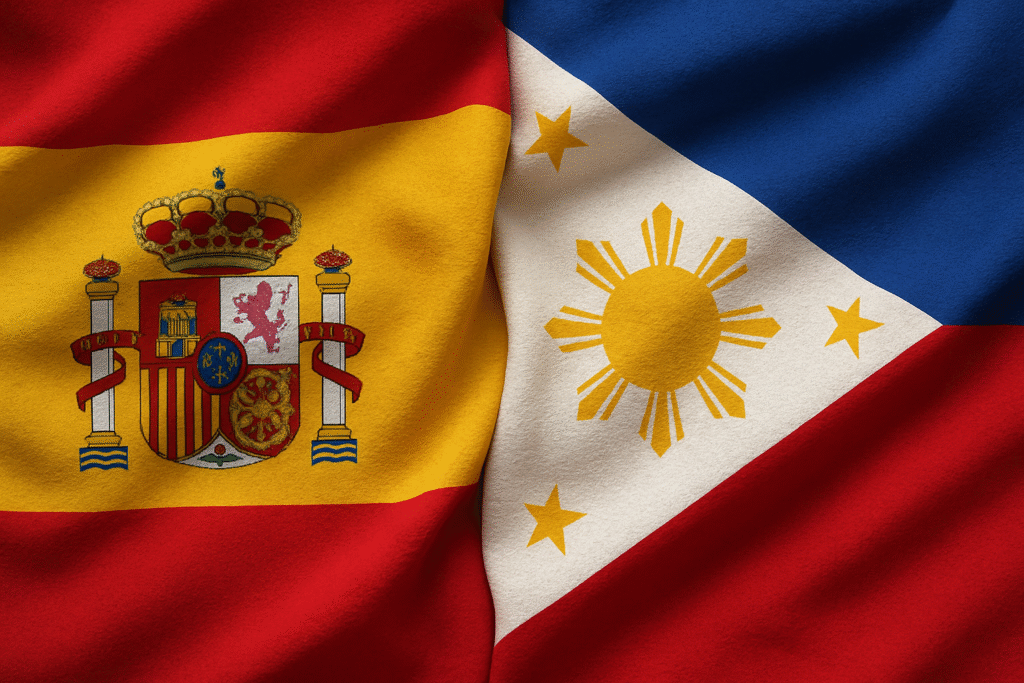Tagalog and Spanish don’t just share a few words; they have thousands swirling around everyday conversations, government paperwork, and even the little things you hear at the local market. When Spain colonized the Philippines from 1565 to 1898, Tagalog speakers picked up plenty of Spanish vocabulary, not just for formal or fancy uses, but also for basic, regular stuff that stuck around long after.

How Spanish Ended Up in Tagalog: A Quick Look Back
Spanish influence shows up everywhere in the Philippines, and language is one of the easiest places to spot it. Under colonial rule, Tagalog speakers borrowed words to describe new religious concepts, government jobs, and objects from daily life. What’s interesting is that, unlike English, which kept most of its core vocabulary even after French influence, Tagalog replaced some of its basic native words with Spanish ones. You hear words like pero (but), gusto (to like), and berde (green) on a daily basis, and they sound surprisingly Spanish for good reason.
Spanish was never widely spoken by most Filipinos (only a tiny percent ever became fluent), but these words stuck through how people mixed languages at church, in schools, and especially during business or government matters. Sometimes words were adopted not just for necessity, but because Spanish had some status, so people borrowed terms even when native equivalents existed. Many times, Spanish terms co-existed with native expressions, and choosing between them depended on the context or who was speaking.
Loanwords in Everyday Life
Tagalog’s Spanish-influenced vocabulary covers everything from love to lunch. Here are a few examples that pop up all the time:
- Pera (Spanish perra, meaning “coin”) – Means “money” in Filipino, and is the everyday word used in the country.
- Gusto (Spanish gusto, “pleasure/liking”) – Means “to like” or “want” in Tagalog, often replacing the more formal “nais.”
- Almusal (Spanish almorzar, “to eat lunch”) – Means “breakfast” in Filipino, showing a neat semantic twist, since the Spanish word actually means “to have lunch.”
- Yelo (Spanish hielo, “ice”) – The silent “h” in Spanish becomes “y” in Tagalog spelling. If you want ice for your soda, you ask for yelo!
- Kotse (Spanish coche, “car”) – A standard word for “car,” although the native Tagalog for vehicle is “sasakyan.”
- Mesa (Spanish mesa, “table”) – Commonly used instead of the older “hapag” in Tagalog homes and schools.
- Relos (from Spanish reloj, “clock/watch”) – Used for watches and clocks; you’ll hear “Anong oras na sa relos mo?” (What time is it on your watch?).
- Kumpisal (Spanish confesar, “to confess”) – Used for “confession” in the Catholic context, showing the strong religious link between Spanish and Filipino culture.
Many times, both the Spanish loanword and the native term still exist side by side. For example, both luntian and berde mean “green.” People often pick whichever is easier or more commonly understood, especially in urban areas. This provides flexibility but also highlights how Spanish words became embedded in daily talk and pop culture.
Why Tagalog Borrowed So Many Spanish Words
Borrowing from Spanish wasn’t just about naming new things. There are several big reasons this happened so much with Tagalog:
- Colonial Education and Religion: Missionaries and government officials used Spanish for documents, schools, and church, which meant people needed to understand and use Spanish terms for everyday stuff.
- Status and Prestige: There was a sense that using Spanish sounded modern or well-connected. Even if native words were already there, using the Spanish one seemed cooler or more suited to the times. Something similar to this happens with English in some Latin American countries, where young people use it as a way to sound more modern or cooler than their parents.
- Simplicity and Catchiness: Sometimes, the Spanish term is just quicker and easier to use. Pera is a snappier way to say “money” than the formal salapi.
- Lingua Franca Effect: Blends of Spanish and Tagalog in places like Manila started spreading outward. This mirrors how Dutch words filtered into Indonesian or how French phrases turn up in certain English-speaking regions.
Everyday Tagalog Words with Spanish Roots (and How Their Meanings Changed)
Tagalog didn’t always copy Spanish words directly; meanings sometimes changed or got filtered through local culture first. Here are some standout examples:
- Siguro (Spanish seguro, “sure”) – Means “maybe” in Tagalog, flipping the original sense. Instead of being certain, now it’s all about uncertainty!
- Basta (Spanish “enough”) – In Tagalog, it’s a way to say “just,” as in “Just do it” (Basta gawin mo), without the firm edge it carries in Spanish.
- Parol (Spanish farol, “lantern/streetlamp”) – In Filipino, this word is reserved for the Christmas lantern, full of its own Pinoy meaning and tradition.
- Mañanita (Spanish “early morning”) – In the Philippines, it’s an early birthday serenade or dawn celebration, influenced by Mexican tradition.
- Welga (Spanish huelga, “strike”) – Used for labor strikes, with the silent ‘h’ of Spanish turning into a ‘w’ sound in Tagalog spelling.
This local adaptation shows how Tagalog blends borrowed words with its own culture, making every loanword feel at home.
How Words Changed: Pronunciation, Spelling, and Cultural Adaptation
Spanish loanwords in Tagalog didn’t all look or sound the same as their originals. Small shifts helped these words blend into Tagalog’s sounds and writing style:
- Silent “h” turns into “y” or disappears: hielo becomes yelo
- Strong J and CH sounds get softened: jaula becomes hawla (cage), chisme becomes tsismis (gossip)
- “V” changes to “b”: vivir (to live) mirrors bibo (lively or show-off) in Filipino speak
- Grammar switches: Some words turn into new verbs, like asikaso (from hacer caso, to attend to), now used like any Tagalog action word.
You’ll also notice changes like spelling “coche” as “kotse,” making the sound match Tagalog phonetics. These tweaks make sure words fit right in and can be used naturally in daily speech.
Tagalog’s Other Influences (and Clearing Up Myths)
It might seem like every borrowed word in Tagalog must be Spanish, but that’s not the full story. The language has picked up words from Sanskrit, Hokkien, Arabic, English, and Malay as well. You’ll spot terms borrowed from different points in Philippine history—like “baka” which originally meant “maybe” in native Tagalog but now also means “cow” after Spanish contact.
And here are a few myths that need clearing up:
- Spanish was not a common spoken language. Most Filipinos never learned to speak Spanish fluently; the words mostly came in through religion, government paperwork, schools, and sometimes trade.
- Filipino vs. Tagalog? The “Filipino” language you see in schools and government is just standardized Tagalog with more loanwords from English, Spanish, and other Philippine vernaculars.
Modern Tagalog: English Joins the Party
While Spanish had a few centuries to work its way into Tagalog, English has been making its own mark since the American period. Sometimes, you’ll hear both the old Spanish loan and the English version for the same thing—a “car” might be called kotse (Spanish) or just “car,” and sometimes the neutral sasakyan (vehicle).
This mixed vocabulary mirrors how English gobbled up words from French and Norse after the Norman Conquest. Tagalog became super adaptable, blending colonial, regional, and even pop culture terms together in daily speech.
It’s pretty common now to hear sentences that blend Spanish, English, and Tagalog all in one go—a true showcase of linguistic mixing in modern Filipino life. For example, someone might say, “Punta tayo sa mall mamaya, gusto mo?” (Let’s go to the mall later, do you want to?), blending “mall” from English and “gusto” from Spanish-rooted Tagalog.
Learning Spanish with Tagalog Loanwords: Tips and Tricks for Tagalog Speakers
If you already speak Tagalog, you’ve got a hidden advantage when learning Spanish! Many everyday Tagalog words come from Spanish, and recognizing these can help you pick up Spanish vocabulary much faster. Here’s how to make the most of this overlap:
Watch for These Helpful Patterns:
- Common Tagalog words with Spanish roots — watch the spelling and pronunciation shift
Example: Tagalog mesa (table) ← Spanish mesa - Religious, food, and government-related terms often stay close in meaning
Example: Tagalog simbahan (church) ← Spanish iglesia / misa - “False friends” — words that came from Spanish but changed meaning in Tagalog
Example: Tagalog siguro (“maybe”) ≠ Spanish seguro (“surely”)
Be Careful With False Friends!
Some words look or sound familiar but mean something different now. Here are a few examples:
| Tagalog Word | Spanish Origin | Tagalog Meaning | Original Spanish Meaning |
| Siguro | Seguro | Maybe | Surely |
| Almusal | Almorzar | Breakfast | To eat lunch |
| Ayuda | Ayuda | Government assistance / aid | Help (general) |
| Maboka | Boca | Loudmouth (talkative person) | Mouth |
| Parol | Farol | Christmas lantern | Lantern / streetlight |
When you hear a Spanish word that sounds familiar in Tagalog, listen to the context. It might be a helpful bridge to understanding—or it might lead you astray if you assume the meanings are identical!
If you want to learn more tips on how to start learning Spanish, you can check out this article: Top 10 Tips For Beginners Starting Spanish. In my experience as a Spanish teacher, it’s not difficult for Filipinos to start learning and improve their Spanish because of this shared background. So, good luck on your Spanish adventure!
Frequently Asked Questions
Question: Did Tagalog completely replace native words with Spanish?
Answer: No, many native words are still around, often used in different situations or for things that pre-date Spanish influence. The most common, everyday words tend to be swapped for Spanish, especially in cities, but older or formal terms still turn up in writing or in rural areas.
Question: If Spanish wasn’t widely spoken, how did words spread?
Answer: Most borrowing happened through religious ceremonies, government dealings, and the Filipino upper class mixing Spanish into official or trendy situations. The loanwords spread through cultural mixing, not through strict classroom teaching.
Question: What are some other languages that influenced Tagalog?
Answer: Tagalog features words from Sanskrit, Arabic, Hokkien (Chinese), English, and Malay, showing the diverse trade and colonial history of the Philippines. Besides that, Tagalog continues to add new words from pop culture and technology, making it a living, growing language that keeps up with the times.
Question: Are there any tricks to spotting Spanish loanwords in Tagalog text?
Answer: Look for familiar endings like -ado/ada turned into -ado, -ista, or -ero, and watch for the “k” or “ts” spellings for “c” and “ch”. Often, words for calendar months, numbers, and church activities are straight from Spanish. Knowing these shortcuts will help Spanish speakers and language enthusiasts pick up connections more easily!
Question: Has the Spanish influence on Tagalog language faded over time?
Answer: While English has become more popular in business and schools, Spanish-rooted words remain strong in day-to-day Tagalog speech, especially for food, household objects, and family talk. That influence is a big part of what makes Filipino languages unique.


